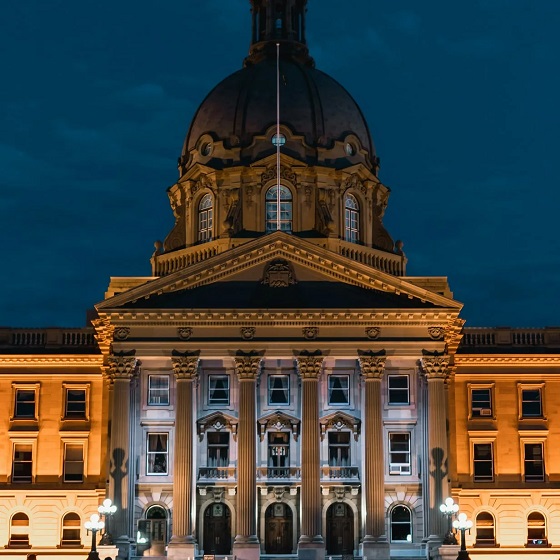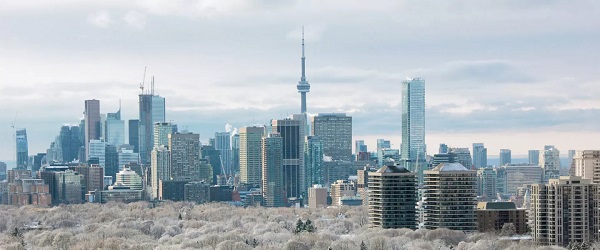Uncategorized
Taiwan president calls for clear probe of fatal train crash

DONGSHAN TOWNSHIP, Taiwan — Taiwan’s president pressed for a quick, transparent probe into the cause of the island’s worst train crash in nearly three decades as the search of the derailed cars ended and crash investigators examined the wreckage Monday.
The eight-car Puyuma express ran off the tracks as it went around a bend where the maximum speed is 75
Eighteen people were killed and 187 injured in the crash that left most of the cars damaged and five overturned in a zig-zag pattern to the left of the tracks. Rescuers searched through the night for more victims before work crews moved the derailed cars upright to assist the investigation.
“Everyone cares a lot about the cause of the accident,” Taiwan President Tsai Ing-wen said in a statement from her office. “Therefore we request that the investigating departments must as soon as possible make clear the timing and situation of the whole accident from start to finish and be able to give citizens a report.”
That report may take more than a day as investigators do interviews and check records, a Taiwan Railways Administration spokesman said on customary condition of anonymity. The speed of the train was not being released due to the pending investigation, but has not been ruled out as a cause.
The Taiwan Railways Administration said it has not released any official video pending the investigation.
Survivors told Taiwan’s official Central News Agency the driver applied emergency brakes multiple times before the train derailed. One told local television reporters the train sped up after taking the curve.
Crash investigators checked inside and underneath the now-upright cars for evidence. The Yilan County prosecutor also surveyed the wreckage as her office talked to witnesses.
The 6-year-old trains were built to travel at an especially fast 150 kph to ease transportation on rugged parts of the island. They are designed to tilt when going around curves.
Taiwan Railways bought the Puyuma cars in 2011 from Japanese maker Nippon Sharyo for $260 million. The seller said then that the trains were part of a $46 billion upgrade of the line along Taiwan’s east coast.
The train that derailed had its most recent inspection and major maintenance work in 2017, Taiwan Railways Director Lu Chieh-shen said Sunday at a televised news conference.
Lu offered to resign Monday, an offer that is not unusual in Taiwan in such situations. It’s not yet certain if his offer would be accepted or if he would be asked to stay as the investigation continues.
Five people killed including a 9-year-old boy and a 12-year-old girl belonged to a single family. Three students and two teachers who died were from the same middle school.
Some passengers were crushed to death, Ministry of National
The train had been carrying more than 360 passengers on a popular weekend route from a suburb of Taipei in the north to Taitung, a city on Taiwan’s southeast coast.
Railway service was partly restored Monday.
A 1991 train wreck killed 30 people, and Sunday’s derailment was at least the third deadly rail accident in Taiwan since 2003.
A tourist train overturned in the southern mountains in April 2011 after a large tree fell into its path. Five Chinese visitors were killed. A train undertaking a test run ignored a stop sign and crashed into another train in northeastern Taiwan in June 2007. Five people were killed and 16 others hurt.
And in March 2003, a train derailed near a popular mountain resort, killing 17 people and hurting more than 100 people. Investigators blamed brake failure.
___
AP writers Johnson Lai in Su’Ao, Taiwan, Yanan Wang in Beijing and Elaine Kurtenbach in Bangkok contributed to this report.
Ralph Jennings, The Associated Press
Uncategorized
Cost of bureaucracy balloons 80 per cent in 10 years: Public Accounts

The cost of the bureaucracy increased by $6 billion last year, according to newly released numbers in Public Accounts disclosures. The Canadian Taxpayers Federation is calling on Prime Minister Mark Carney to immediately shrink the bureaucracy.
“The Public Accounts show the cost of the federal bureaucracy is out of control,” said Franco Terrazzano, CTF Federal Director. “Tinkering around the edges won’t cut it, Carney needs to take urgent action to shrink the bloated federal bureaucracy.”
The federal bureaucracy cost taxpayers $71.4 billion in 2024-25, according to the Public Accounts. The cost of the federal bureaucracy increased by $6 billion, or more than nine per cent, over the last year.
The federal bureaucracy cost taxpayers $39.6 billion in 2015-16, according to the Public Accounts. That means the cost of the federal bureaucracy increased 80 per cent over the last 10 years. The government added 99,000 extra bureaucrats between 2015-16 and 2024-25.
Half of Canadians say federal services have gotten worse since 2016, despite the massive increase in the federal bureaucracy, according to a Leger poll.
Not only has the size of the bureaucracy increased, the cost of consultants, contractors and outsourcing has increased as well. The government spent $23.1 billion on “professional and special services” last year, according to the Public Accounts. That’s an 11 per cent increase over the previous year. The government’s spending on professional and special services more than doubled since 2015-16.
“Taxpayers should not be paying way more for in-house government bureaucrats and way more for outside help,” Terrazzano said. “Mere promises to find minor savings in the federal bureaucracy won’t fix Canada’s finances.
“Taxpayers need Carney to take urgent action and significantly cut the number of bureaucrats now.”
Table: Cost of bureaucracy and professional and special services, Public Accounts
| Year | Bureaucracy | Professional and special services |
|
$71,369,677,000 |
$23,145,218,000 |
|
|
$65,326,643,000 |
$20,771,477,000 |
|
|
$56,467,851,000 |
$18,591,373,000 |
|
|
$60,676,243,000 |
$17,511,078,000 |
|
|
$52,984,272,000 |
$14,720,455,000 |
|
|
$46,349,166,000 |
$13,334,341,000 |
|
|
$46,131,628,000 |
$12,940,395,000 |
|
|
$45,262,821,000 |
$12,950,619,000 |
|
|
$38,909,594,000 |
$11,910,257,000 |
|
|
$39,616,656,000 |
$11,082,974,000 |
Uncategorized
Trump Admin Establishing Council To Make Buildings Beautiful Again


From the Daily Caller News Foundation
By Jason Hopkins
The Trump administration is creating a first-of-its-kind task force aimed at ushering in a new “Golden Age” of beautiful infrastructure across the U.S.
The Department of Transportation (DOT) will announce the establishment of the Beautifying Transportation Infrastructure Council (BTIC) on Thursday, the Daily Caller News Foundation exclusively learned. The BTIC seeks to advise Transportation Secretary Sean Duffy on design and policy ideas for key infrastructure projects, including highways, bridges and transit hubs.
“What happened to our country’s proud tradition of building great, big, beautiful things?” Duffy said in a statement shared with the DCNF. “It’s time the design for America’s latest infrastructure projects reflects our nation’s strength, pride, and promise.”
“We’re engaging the best and brightest minds in architectural design and engineering to make beautiful structures that move you and bring about a new Golden Age of Transportation,” Duffy continued.
Mini scoop – here is the DOT’s rollout of its Beautifying Transportation Infrastructure Council, which will be tasked with making our buildings beautiful again. pic.twitter.com/
9iV2xSxdJM — Jason Hopkins (@jasonhopkinsdc) October 23, 2025
The DOT is encouraging nominations of the country’s best architects, urban planners, artists and others to serve on the council, according to the department. While ensuring that efficiency and safety remain a top priority, the BTIC will provide guidance on projects that “enhance” public areas and develop aesthetic performance metrics.
The new council aligns with an executive order signed by President Donald Trump in August 2025 regarding infrastructure. The “Making Federal Architecture Beautiful Again” order calls for federal public buildings in the country to “respect regional architectural heritage” and aims to prevent federal construction projects from using modernist and brutalist architecture styles, instead returning to a classical style.
“The Founders, in line with great societies before them, attached great importance to Federal civic architecture,” Trump’s order stated. “They wanted America’s public buildings to inspire the American people and encourage civic virtue.”
“President George Washington and Secretary of State Thomas Jefferson consciously modeled the most important buildings in Washington, D.C., on the classical architecture of ancient Athens and Rome,” the order continued. “Because of their proven ability to meet these requirements, classical and traditional architecture are preferred modes of architectural design.”
The DOT invested millions in major infrastructure projects since Trump’s return to the White House. Duffy announced in August a $43 million transformation initiative of the New York Penn Station in New York City and in September unveiledmajor progress in the rehabilitation and modernization of Washington Union Station in Washington, D.C.
The BTIC will comprise up to 11 members who will serve two-year terms, with the chance to be reappointed, according to the DOT. The task force will meet biannually. The deadline for nominations will end Nov. 21.
-

 Focal Points2 days ago
Focal Points2 days agoPharma Bombshell: President Trump Orders Complete Childhood Vaccine Schedule Review
-

 Automotive1 day ago
Automotive1 day agoTrump Deals Biden’s EV Dreams A Death Blow
-

 Automotive1 day ago
Automotive1 day agoCanada’s EV Mandate Is Running On Empty
-

 Business18 hours ago
Business18 hours agoWhy Does Canada “Lead” the World in Funding Racist Indoctrination?
-

 Alberta2 days ago
Alberta2 days agoPremier Smith: Canadians support agreement between Alberta and Ottawa and the major economic opportunities it could unlock for the benefit of all
-

 Media18 hours ago
Media18 hours agoThey know they are lying, we know they are lying and they know we know but the lies continue
-

 Alberta2 days ago
Alberta2 days agoA Memorandum of Understanding that no Canadian can understand
-

 Censorship Industrial Complex2 days ago
Censorship Industrial Complex2 days agoFrances Widdowson’s Arrest Should Alarm Every Canadian










